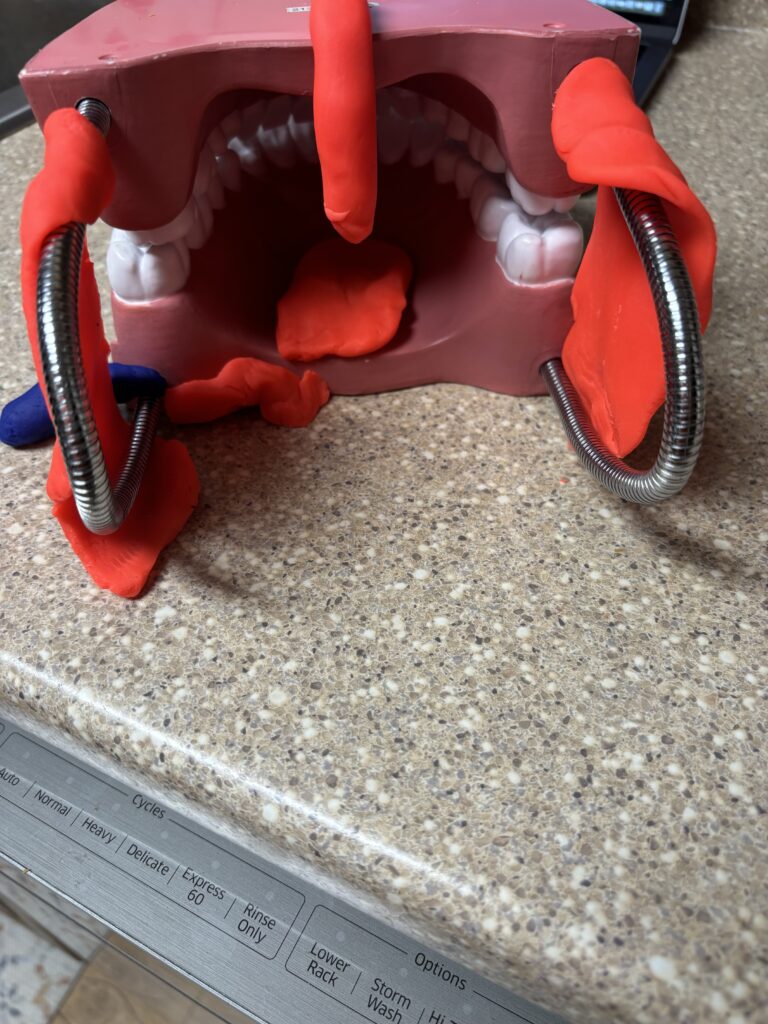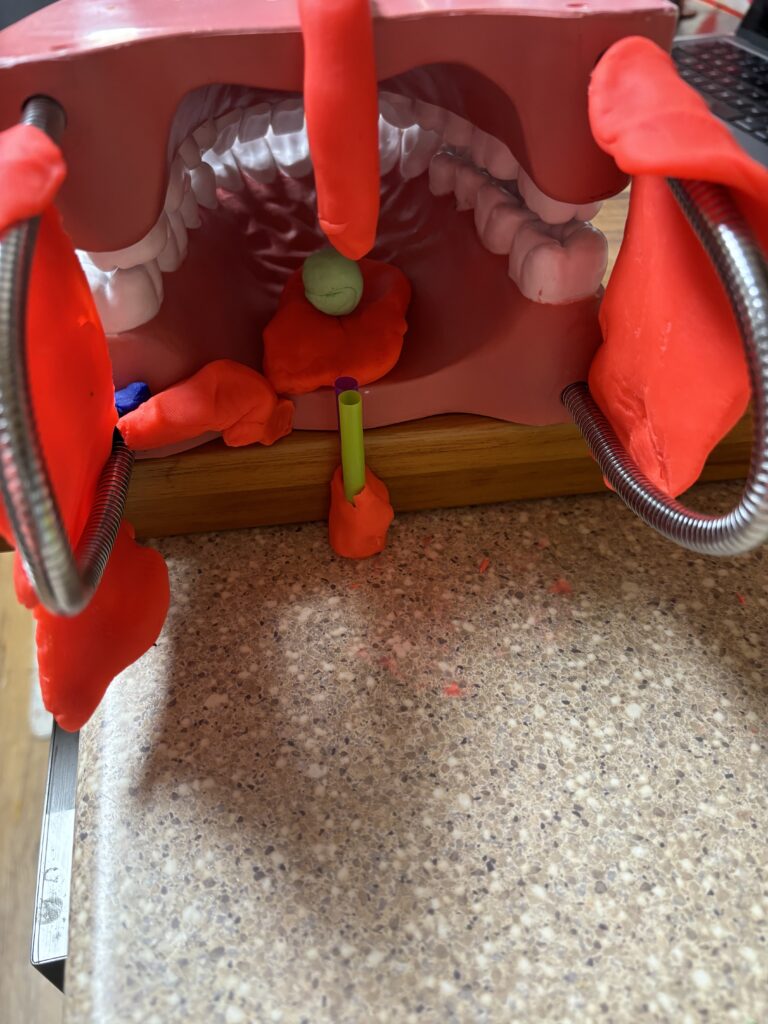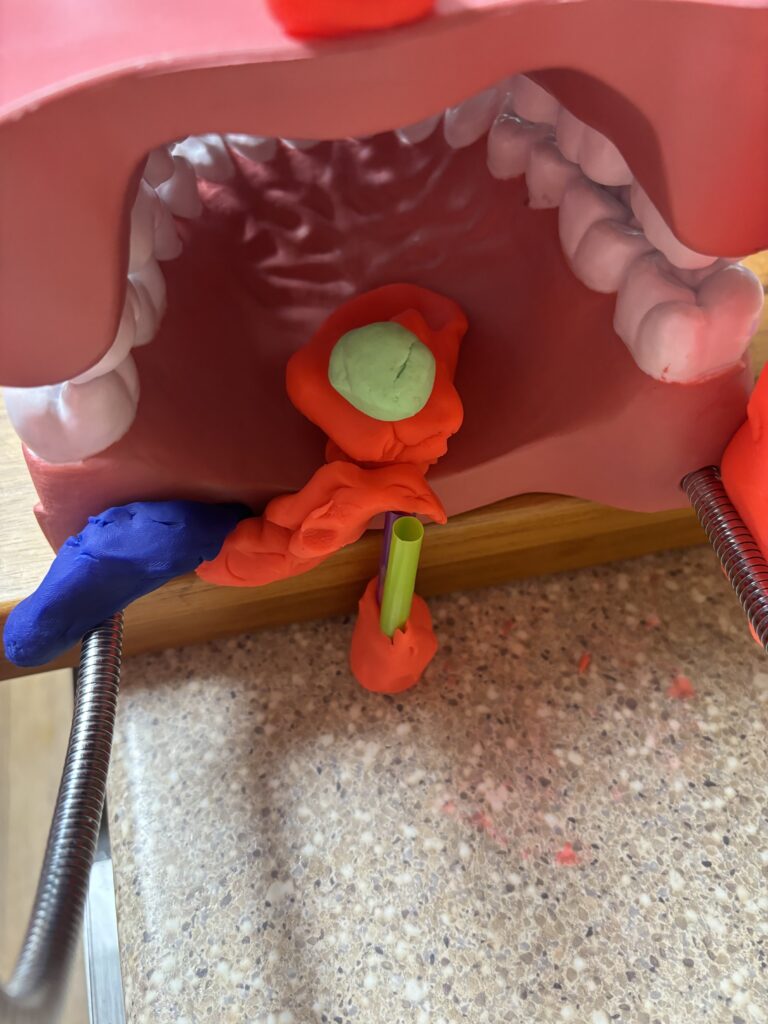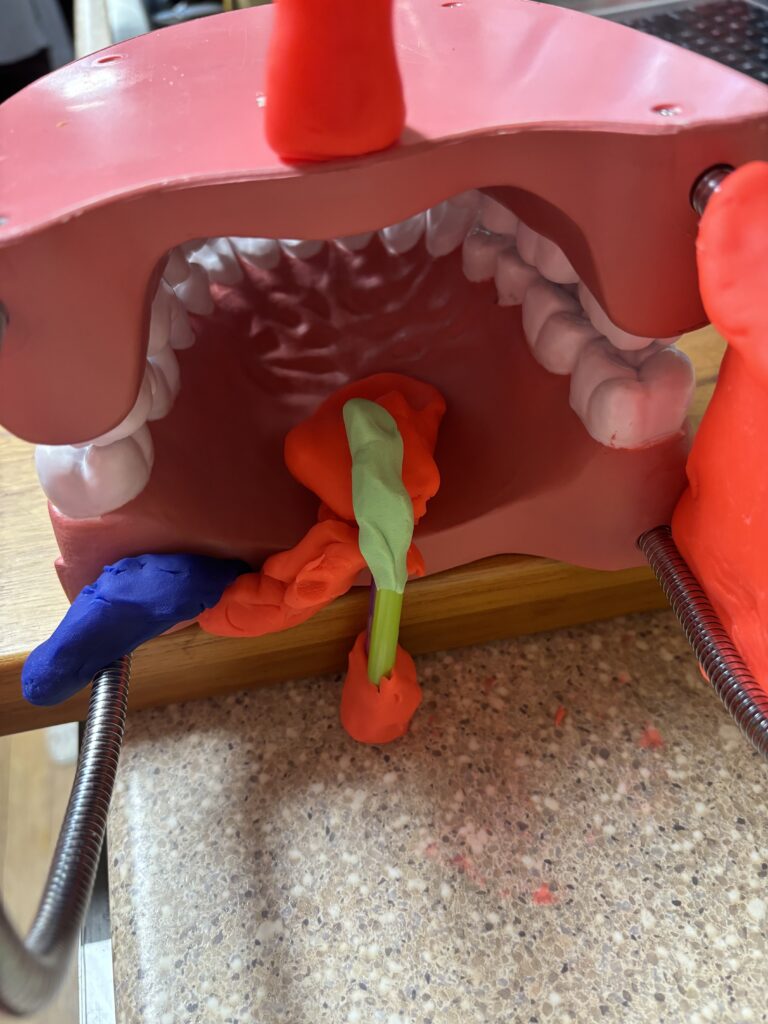My objective for this report is to cover design instructions integrating muscles and bones used in swallowing. I will cover the steps for swallowing and the muscle and bones that work together to complete the process. I will also discuss the swallowing disorder dysphagia in children, what can go wrong during the swallowing process and why it is important to diagnose and facilitate a treatment plan.
Swallowing is a complex function that involves many muscles and bones to work together to complete the process. Swallowing is done in 4 stages (Matsuo, K., & Palmer, J. B. (2008)). The first phase is broken into two parts starting with food entering the mouth and the tongue moving the food past front teeth which is the transportation stage. Then chewing starts breaking down food called mastication. During this process the jaw moves in a cycle motion. The buccinator muscles (cheeks) and the main muscle masseter, which is connected to the lower jaw, help in opening and closing the jaw. The temporalis muscle assists in the chewing process as it helps retract the mandible. The cycle movement involves a network of the tongue, check, soft palate and hyoid bone working together in the food processing stage.
The third step is where food is ready to be swallowed. The bolus (chewed up food) is placed on the tongue and propelled backwards through the oropharynx. Once in the pharyngeal, swallowing happens quickly. The tongue helps assist the hyoid bone and larynx during swallowing by raising the hyoid bone in a way that also raises the larynx allowing the epiglottis to cover the glottis during deglutition(swallowing). The soft palate elevates and contract the lateral and posterior walls of the pharynx which closes the nasopharynx nasal cavity) at the same time the bolus head comes into the pharynx.
Finally, the pharyngeal constrictor muscles contract sequentially from top to the bottom squeezing the bolus downward. The pharynx also shortens vertically to reduce the volume of the pharyngeal cavity. During passage of the bolus several processes happen to block airway to avoid choking. First the vocal folds close to seal the glottis and the arytenoids tilt forward to contact the epiglottic base prior to the opening of the upper esophagus sphincter UES. The hyoid bone and larynx are pulled upward and forward by contraction of the suprahyoid muscles and thyrohyoid muscle putting the larynx under the tongue. The epiglottis tilts backward to seal the larynx vestibule. This opens the upper esophagus sphincter by relaxation of cricopharyngeal muscle then contraction of the suprahyoid muscle and thyrohyoid muscle which pulls the hyo-laryngeal complex forward opening the sphincter. The pressure of bolus descending helps to open the UES. The esophagus is a tubular structure composed of striated and smooth muscles. The food bolus is able to move down the esophagus by waves of muscle contractions and gravity.
Dysphagia is the difficulty or discomfort with swallowing. Dysphagia can happen at any stage during the swallowing process. There are two types of dysphagia. Oropharyngeal in which the oral or pharyngeal phases of the swallowing process are involved, and esophageal in which the underlying cause arises from the esophageal body or from the esophageal sphincters. (Lanzoni, G., et al.,(2022)) Children with dysphagia have a higher risk of choking, malnutrition or serious life threatening infections. Causes of dysphagia in children vary and more research is needed. Children with dysphasia may have structural issues such as a cleft palate or neuromuscular disease such as cerebral palsy.(Garip, S. (2024)). “Children with neurometabolic or neuromuscular disorders and chronic gastrointestinal disease are at a higher risk of dysphagia than healthy children. Swallowing problems can prevent typical development by preventing adequate energy and nutritional intake.” Symptoms of dysphagia can include coughing, hoarseness, wheezing and frequent lung infections. Garip, S. (2024). “In esophageal dysphagia, during the passage of food into the esophagus the upper esophageal sphincter cannot relax. There can be coughing, throat clearing, pyrosis (heartburn), burping, vomiting and abdominal paint along with unexplained weight loss. Oropharyngeal dysphagia is more common in neuromuscular and neurometabolic diseases because the neuromuscular communication is not intact.” Treatment for dysphasia varies depending on type of dysphasia and location of dysphasia. Treatment plans usually include an interdisciplinary team working together to help develop the best plan. Working with patients on timing of swallowing, positioning of body and diet may be included in the plan. Further research is needed to better help those who suffer with dysphagia.
References:
Anatomy and Physiology of Feeding and Swallowing – Normal and Abnormal
Matsuo, K., & Palmer, J. B. (2008). Anatomy and physiology of feeding and swallowing: normal and abnormal. Physical medicine and rehabilitation clinics of North America, 19(4), 691–vii. https://doi.org/10.1016/j.pmr.2008.06.001
Esophageal Dysphagia in Children: State of the Art and Proposal for a Symptom-Based Diagnostic Approach
Lanzoni, G., Sembenini, C., Gastaldo, S., Leonardi, L., Bentivoglio, V. P., Faggian, G., Bosa, L., Gaio, P., & Cananzi, M. (2022). Esophageal Dysphagia in Children: State of the Art and Proposal for a Symptom-Based Diagnostic Approach. Frontiers in pediatrics, 10, 885308. https://doi.org/10.3389/fped.2022.885308
Evaluation of children with dysfagia
Garip, S. (2024). Evaluation of children with dysfagia. Pamukkale Medical Journal, 17(2), 215-224. https://doi.org/10.31362/patd.1343219





This project was so interesting to me. I have never really taken the time to consider how many muscles and bones are utilized when eating. I think it is useful to know which muscles are used for swallowing. I learned that swallowing happens in a four step process. Step 1: food enters the mouth and is moved past the teeth by the tongue. Step 2: chewing. Step 3: food is ready to be swallowed. Step 4: food is moved downward through muscle contractions.
Something else that I think is important is the disorders relating to swallowing. Dysphagia is the difficulty or discomfort with swallowing. I did not know that this was a disorder. I am a preschool teacher and very recently, one of my five-year-old students developed a fear of choking. She stated that she was having difficulty swallowing and was afraid she was going to choke. Her parents thought this was something related to anxiety however I am wondering now if she could be experiencing something physiological. It is worth looking into and learning more about.
I think the STEAM piece provides a great visualization of the swallowing process. It is well done.